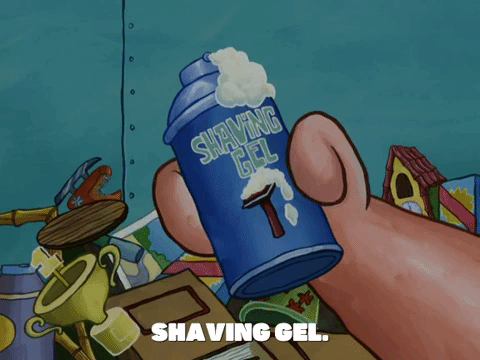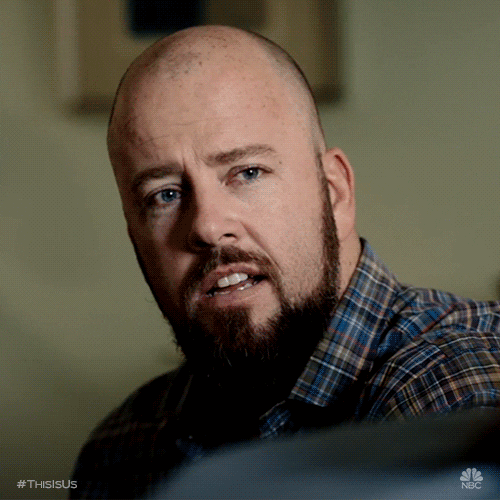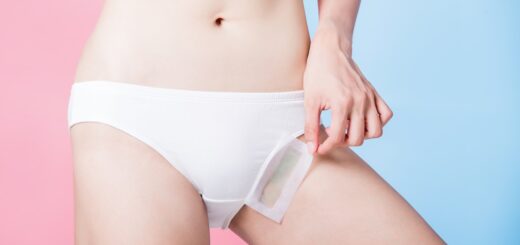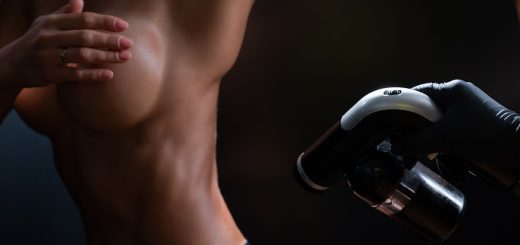Irritated Skin After Shaving? You Could Have a Nickel Allergy
If you passed chemistry class in school, you probably remember learning about a chemical element known as nickel.
But you probably don't remember your teacher saying that this silver-white metal is one of the most ubiquitous elements on the planet.
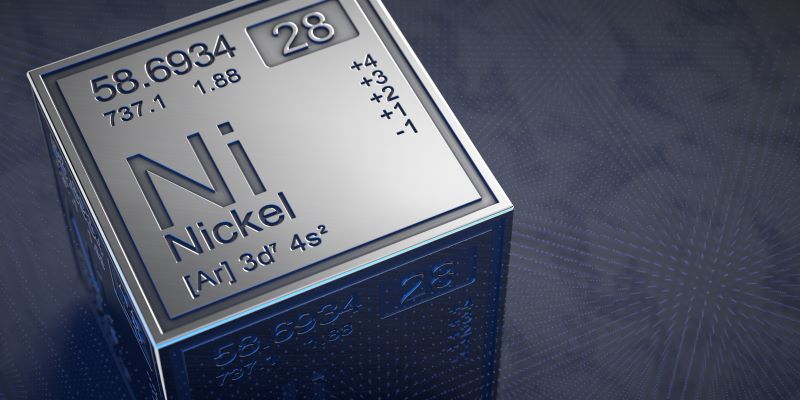
Today it's used in more than 300,000 different products, including mobile phones, coins, and keys.
Nickel is in everything, even the earth's core, which is why there's really no way to avoid it. Not that you'd want to do that anyway.
Nickel helps electric vehicles go green, makes cheap foreign vacations possible and even allows you to spread margarine on your bread.

Consequently, nickel is a staple of our daily lives. It's an incredibly useful metal.
At the same time, it's incredibly dangerous.
Unlike some metals, nickel is not going to poison us. But if we are sensitive to it, it can make our lives more than a little unpleasant.
At best, we're talking rashes that make us look like we've just rolled around in poison ivy.
At worst, we're talking severe respiratory problems such as asthma.
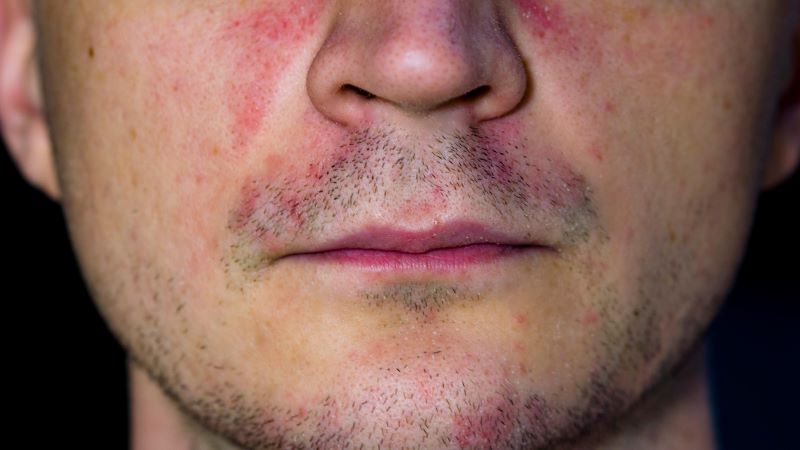
If you suspect that you're allergic to nickel, your initial response is probably to point fingers at the obvious objects, such as coins and keys.
But the problem is:
The real culprit could be hiding somewhere else.
Like your bathroom.
The one object that you use to keep your skin nice and smooth might very well be the cause of horrible rashes and red splotches that flare up on your face, arms, legs and other parts of your body for no apparent reason.
We're talking about razors, of course.
The Science Behind Nickel Allergy
Nickel allergy is a type of allergic contact dermatitis. Some people call it "eczema."
It's one of the most common skin allergies out there.
In fact:
Around 10 percent of Americans are allergic to the lustrous silver-white metal.
If you know you have a nickel allergy, here are some nickel free razor options for you.
Nickel allergy occurs when a person that is sensitive to nickel comes into contact with it and consequently has an adverse reaction.
You see:
Under normal circumstances, your immune system defends your body against dangerous substances, such as bacteria, viruses, and toxins.
However:
If you're sensitive to nickel, your immune system mistakenly thinks that the lustrous metal is a harmful intruder and starts producing a hormone called histamine to ward off the substance.
The result?
An allergic reaction!
Here's how it works:
Anyone Can Become Allergic to Nickel
And it can happen at any point in your life. One day you have no trouble using your favorite shaver. The next, your face is itching like never before.
And it's not like nickel allergy is preventable.
Here's why:
No one knows why some people become allergic to nickel, and others don't.
Nonetheless, nickel sensitivity is more common in women, and in particular, in teenage girls.
Indeed:
Nickel affects around 17 percent of women and only five percent of men.
There's a good reason for that:
Ear piercing is considered the number one thing that starts up nickel allergy. Seeing how more women than men have their ears pierced, it only makes sense that females are more sensitive to nickel than males.

Furthermore:
Teenage girls wear a lot of cheap metal jewelry, which doesn't help either.
And get this:
Your job might have something to do with your nickel allergy too.
Those who are in constant contact with nickel are more likely to have an allergic response.
Why?
Because repeated exposure to it can lead to increased sensitization.
Hairdressers, nurses, caterers, people who handle cash daily and people who work with metals see an increased risk of becoming allergic to nickel.
Most people that are allergic to nickel find that they get a rash only when they handle objects that contain nickel for a prolonged period or if their skin is damp or broken (i.e., sunburned, sweaty or cut).
In addition:
If you're allergic to other metals, you're more likely to be allergic to nickel too.
But don't think that you're safe if you avoid cheap jewelry, have no other allergies or work an office job that requires no contact with metals.
Fact is:
Sensitivity to nickel may be inherited.
In the 1930s, knitting needles and garters were the most common nickel allergy triggers. In the 1970s, they were replaced by piercing jewelry, jeans buttons, and costume jewelry.
Today, tech gadgets are the biggest offenders. These include phones, laptops, iPad tablets, and even activity training wristbands.
In 2014, for example, Fitbit recalled one million devices after its consumers complained of strange skin reactions attributed to nickel and adhesives.
Image via Pixabay
A Rash Is Not the Only Telltale Sign You Are Sensitive to Nickel
If you experience any of the following symptoms:
- Dry skin patches that resemble a burn
- Changes in skin color (for example redness)
- Skin rash
- Skin bumps
- Itching
- Blisters (in severe cases)
- Pain (in extremely severe cases)
You are probably sensitive to nickel.
The good news is:
An allergic reaction usually occurs in the exact area where your skin came into contact with nickel.
For example:
If you're allergic to nickel and you shave your beard with a shaver made with nickel, you will get a rash on your chin.
Nonetheless:
In some circumstances, the rash can spread to areas that did not come into contact with the metal.
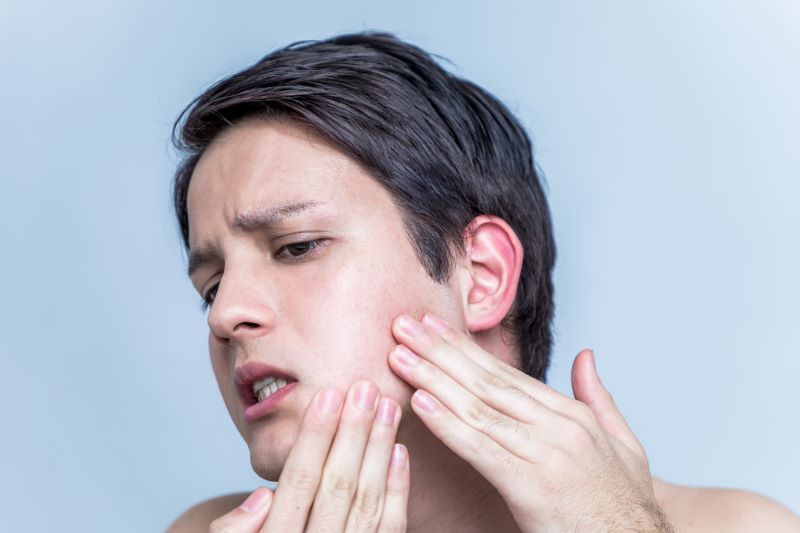
This is particularly true if you handle objects made from nickel and if traces of the metal remain on your fingertips.
Consuming food that contains nickel (more on this later) could have similar effects, including:
- Uncontrollable itching
- Dry or rough skin
- Discolored skin
- Thick, scaly or even raw skin
- Overtly tender skin
- Blisters
That sounds pretty awful, right?
And yet it can get even worse.
If your reaction to nickel is severe, you could experience respiratory problems including nasal inflammation, runny nose, sneezing, and asthma.
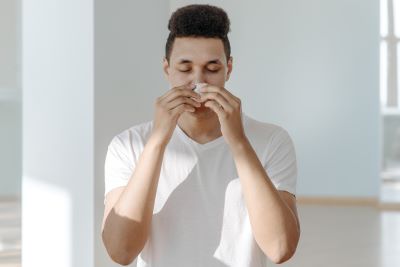
Severe symptoms, such as fatigue, headaches, nausea, diarrhea, and vomiting, could also indicate that you have systematic nickel allergy syndrome.
But the annoying thing is:
The delay in nickel allergy symptoms makes it hard to figure out what exactly is causing an allergic reaction.
Confused?
Let us explain:
While in most cases nickel allergy occurs within 12 to 48 hours, sometimes symptoms can come a week after contact with nickel.
While the most common health effect of nickel is an allergic reaction, people working in nickel-processing plants or nickel refineries complain of reduced lung function and chronic bronchitis. Some have even developed cancer.
However, the amounts of nickel breathed in by these persons is higher than the amounts typically found in the environment.
Image via Pixabay
If you're still not sure...

Talk to your doctor or dermatologist!
While in some cases your doctor might be able to diagnose nickel allergy by merely looking at your skin, the surest way to know if you have nickel allergy is to do a patch test.
During a patch test, small amounts of nickel are placed on your upper back and then covered with a patch.
If you're allergic to nickel, the skin underneath the patch will be inflamed either immediately after the removal of the patch (48 or 72 hours after its application) or a few days later.
In some cases, you'll need more tests before your doctor knows for sure whether you're allergic to nickel or not.
Don't worry about the safety of patch tests:
Because they use very low concentrations of allergens, they're safe even for those with extreme allergies.
Pretty Much Everything Around You Contains Nickel
As we've already established, nickel is extremely hard to avoid.
Because nickel is resistant to high heat and corrosion, it's used in countless everyday items.
These include:
- Jewelry
- Mobile phones
- Coins
- Keys
- Guitar strings
- Some eye cosmetics
- Eyeglass frames
- Orthodontic braces
- Pens
- Cooking equipment
- Eating utensils
- Clothing fasteners
As bizarre as it sounds:
Small amounts of nickel also appear in a large number of foods.
Foods that contain nickel include:
- Black tea
- Nuts
- Soy milk
- Chocolate
- Grains such as oats, whole wheat pasta, multigrain bread, and cereals
- Vegetables such as asparagus, cauliflower, spinach, broccoli, and all canned vegetables
- Legumes such as lentils, chickpeas, and peas
- Fruits such as pears, bananas, and all canned fruits
- Soy products such as tofu
Does that mean that you potentially have to give up the foods that you love?
Not necessarily.
But:
Your doctor might advise you to eat some of the above foods in moderation.
Nickel is the only element in the world named after the devil. Its name is derived from "Kupfernickel," a German word that means "Old Nick's copper" or "the devil's copper."
Back in the 15th-century German miners tried to extract copper from an ore that looked like a copper ore but was actually a nickel ore. Instead of copper, they extracted what they thought to be a useless material.
Believing that the devil (or "Old Nick") was playing tricks on them, they named the fake copper "the devil's copper."
Image via Pixabay
Your Razor Is Not Your Friend
You've probably never thought about it but:
Your razor, and not your aggressive way of shaving or dull blades, could be the cause of your broken skin and painful rashes.
You see:
Most razor blades and foil electric shavers contain small proportions of nickel.
You can test your razor for nickel
Testing your razor for nickel is easier than it sounds.
All you need is dimethylglyoxime spot test, also known as DMG test, which you can find at your local drugstore, or online.
The test contains a solution that turns pink when rubbed onto a metallic surface (such as a razor) that contains nickel.
If you discover that your razor isn't nickel-free, you'll want to switch to a hypoallergenic shaver.
When in doubt, purchase a hypoallergenic razor
Just because you have to buy a hypoallergenic razor, that doesn't mean that you don't have plenty of nickel free or sensitive razor choices!
Granted, from now on you'll probably have to order your razors online.
Still, that's a fairly small price to pay for beautiful, rash-free skin.
The one razor blade brand that caters to people with skin sensitivities
Blades are usually made from stainless steel which contains nickel. No matter how low the proportions of the metal, if you're allergic to nickel you'll probably end up with a nasty rash.
Even though stainless steel that is nickel-free exists, it is not very useful.
Here's why:
Without nickel, a long-lasting sharp edge is practically impossible.
Which is why titanium-covered blades are the answer.
This brings us to Preserve, the most popular brand of blades for those who suffer from nickel allergies.
Preserve is probably the largest producer of hypoallergenic razors on the market. Its blades contain "minimal nickel" in them (not enough to affect those with nickel allergies).
The brand uses stainless steel and titanium to make its phenomenal blades. The titanium coating creates an effective barrier between your skin and the steel.
Furthermore:
The titanium coating ensures that blades stay sharper for much longer. As such, this brand is popular not only with those who suffer from nickel allergies but also with those who want to save a buck.
Nonetheless, continuous use will wear the titanium down eventually, exposing the steel and the low-level nickel.
Consequently:
It's vital to change blades regularly.
There are plenty of nickel-free electric shavers too
Shaving foils in electric shavers also contain small amounts of nickel.
Luckily, there are quite a few brands out there that cater to those with skin sensitivities.
Remington has a unique Titanium line for men. Since their shavers primarily consist of titanium, you don't have to worry about triggering your nickel allergy.
Its 'smooth and silky' shavers also appear to be nickel-free and are suitable for females that are allergic to the metal.
Another brand that is known for its hypoallergenic shavers is Wahl. Some of its shavers come with a special setting for people with sensitive skin whereas others use hypoallergenic foil coating.
Panasonic is yet another company that does not want to leave its customers that suffer from nickel allergies in the lurch. It offers both regular electric shavers and travel shavers.
Don't forget the shaving products!
According to some razor blade studies, sensitivity to the fragrance in shaving products can worsen your reaction to nickel.
As such:
Consider using hypoallergenic shaving products that are also fragrance-free.
Additionally:
Use plain oil, such as argan oil, as a protective layer under your shaving gel.
Treat Your Nickel Allergy Before It's Too Late
The best way to treat a nickel allergy is to determine what caused the allergic reaction and stay away from that item, as well as other items that contain nickel.
Fail to do so, and you might find it impossible to clear up the rash, even when you're no longer in contact with nickel.
On average:
Nickel allergy symptoms last between two to four weeks.
If cutting all physical contact with nickel does nothing for your rash, there are some home remedies you can try.
Home remedies might help
Home remedies might help you soothe your allergic reaction.
For example, soothing lotions may ease the itchiness. Calamine lotion is a good choice.
Wet compresses can also relieve itching and help dry blisters. Try soaking a clean cloth or towel in water or Burrow's solution, a medication that contains aluminum acetate.
Finally, don't forget to moisturize.
Whenever your skin reacts to allergens such as nickel, its natural barrier is disrupted. As such, it is important to moisturize regularly. Try using emollient creams such as mineral oil or petroleum jelly.
Something to keep in mind:
Avoid over-the-counter lotions such as antibiotic creams. They contain ingredients that can worsen your allergic reaction. One such ingredient to watch out for is neomycin.
If not, try medications
Medications that help control inflammation and lessen your body's histamine response are often used to treat rashes caused by nickel allergies.
These include:
- Oral antihistamines such as cetirizine (Zyrtec) or fexofenadine (Allegra)
- Oral corticosteroids such as prednisone
- Corticosteroid creams such as betamethasone dipropionate (Diprolene) or clobetasol (Clobex)
- Nonsteroid creams such as tacrolimus (Protopic) or pimecrolimus (Elidel)
Antihistamines and certain corticosteroid creams are available over the counter and online.
But be careful.
Most medications have side effects.
For example:
Long-term use of Corticosteroid creams can cause skin thinning whereas the consumption of oral corticosteroids can lead to weight gain, increased blood pressure and mood swings.
And of course:
If you want a stronger version of these medications, you'll have to see your doctor first.
Bear in mind that you'll probably have to try a variety of medications before you find one that works for you.
Phototherapy is your last resort
If all else fails, your doctor will most likely recommend phototherapy.
Also known as light therapy, phototherapy involves the use of artificial ultraviolet light on the affected area of your skin.
However:
Phototherapy is an incredibly long process.
It can take months and months of regular phototherapy treatments to produce results.
Why Preventing a Nickel Allergy Is Easier Said than Done
The bad news is:
Once you become sensitive to nickel, you will remain so for life (with minor exceptions).
And:
Because there are no medicines that can stop you from being allergic to nickel, the best way to prevent nickel allergy is to avoid anything that contains the shiny silver-white metal.
In general:
Reading labels carefully and contacting manufacturers when in doubt is a good way to ensure that an item in your possession is nickel-free.
If you can't avoid contact with nickel, opt for safety measures such as gloves.
Furthermore:
Cover things such as buttons, zippers, and mobile phone logos with a clear barrier. The Nickel Guard protective solution is a good choice. Clear nail polish also works wonders (especially on jewelry) but has to be reapplied fairly often.
You don't have to go crazy and start opening metal doorknobs with your elbows though.
It sounds counter-intuitive but:
Not every object containing nickel will cause an allergic reaction.
If your skin is wet, sweaty, raw or broken, nickel is more likely to pass through the surface. In consequence, you are more likely to react to it.
Sometimes You Need to See Your Doctor ASAP
If you develop a rash and you don't know why it's a good idea to make an appointment with your doctor.
Also:
See your doctor if home remedies and over the counter medications fail to relieve your symptoms or if your skin is infected. The latter especially should not be taken lightly.
Why?
Because the infection is not going to go away until treated.
How to know if your skin is infected?
As a rule of thumb:
Yellow, crusted skin that smells odd is probably infected. Keep in mind that skin that is moist, broken or raw is infected more easily than dry skin.
In general, see your doctor if you experience:

Blisters that leak pus

Inexplicable pain

Swiftly spreading rash

Fever

Increasing redness

Rash around the eyes
Prepare for your scheduled appointment by writing down your symptoms, making a list of all the drugs that you take (including dietary supplements and vitamins) and formulating questions that you might want to ask. Furthermore, note down any new foods or products that you might have tried recently.
Nickel: Can't Live with It, Can't Live Without It
Having a nickel allergy is beyond annoying.
Suddenly, you find that you can't wear certain jewelry or touch certain things, at least not if you want to avoid redness and rashes and possibly even blisters.
Heck, you can't even shave without getting a rash or developing dry skin patches.
But it's not all bad.
There are numerous effective measures you can take to avoid triggering your allergic reaction to nickel.
You can coat jewelry with nail varnish, cover zippers and mobile phone parts with a clear barrier, and opt for safer substitutes such as watchbands made of leather as opposed to metal.
As for your razor?
You can replace it with a hypoallergenic shaver.
Sure, these small changes will take some getting used to. But they're worth it.
Featured Image: CC0 via Pixabay






